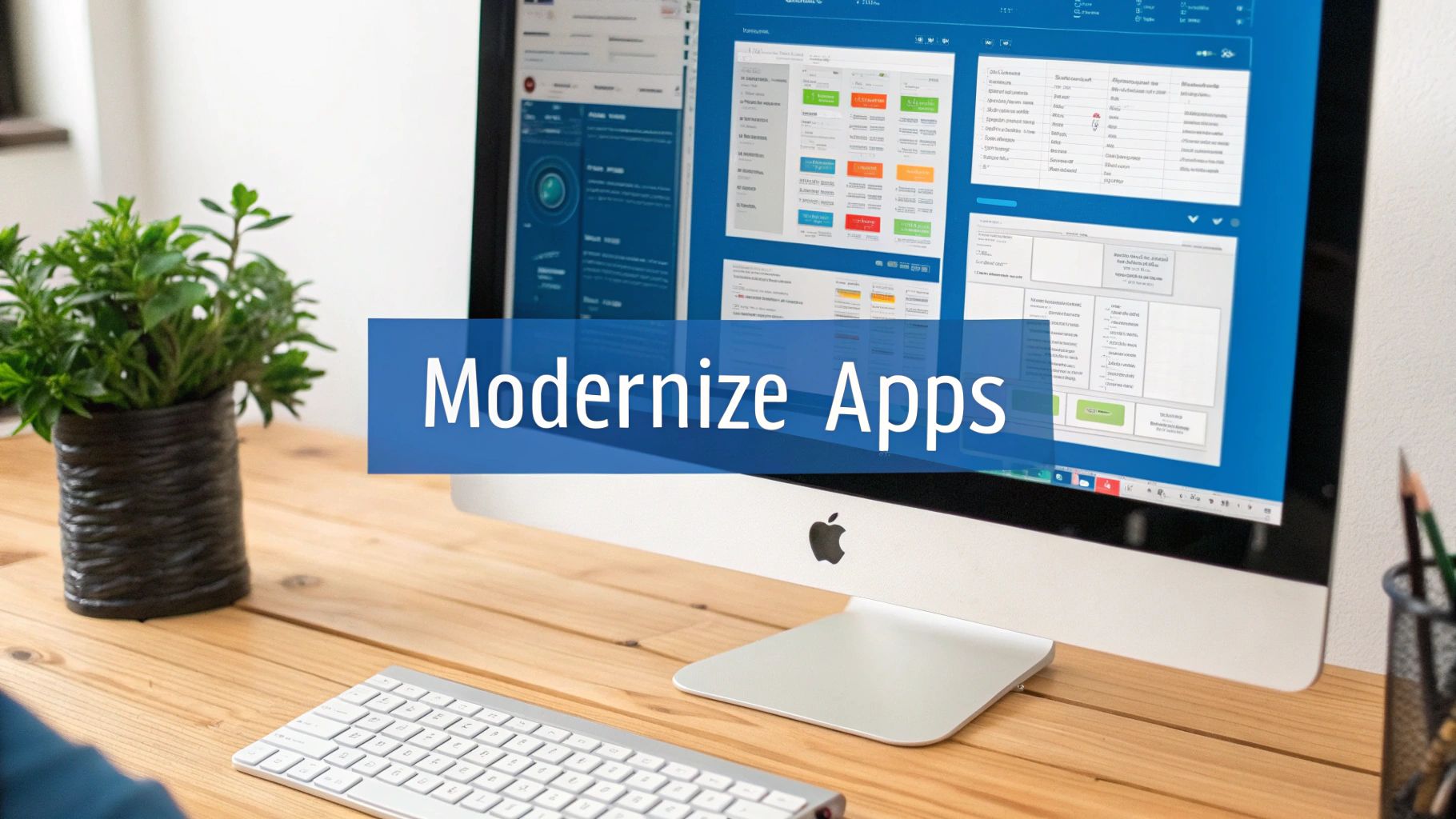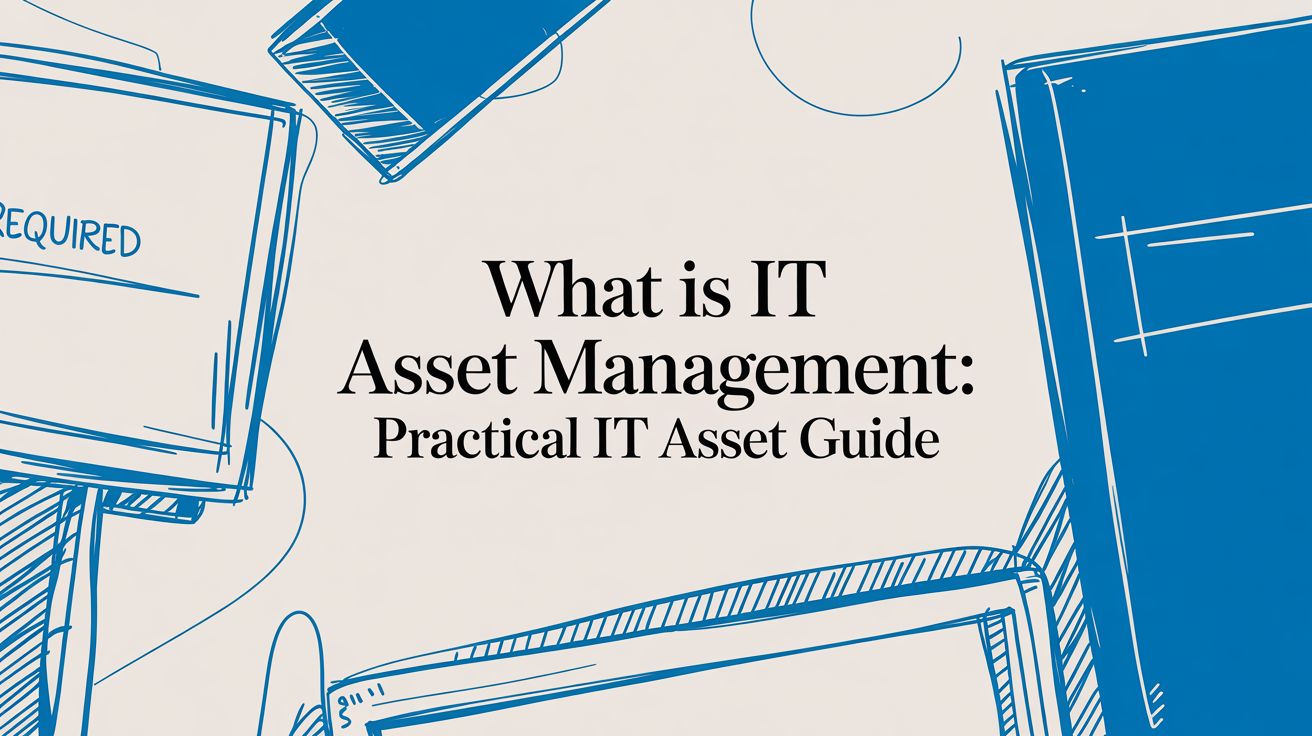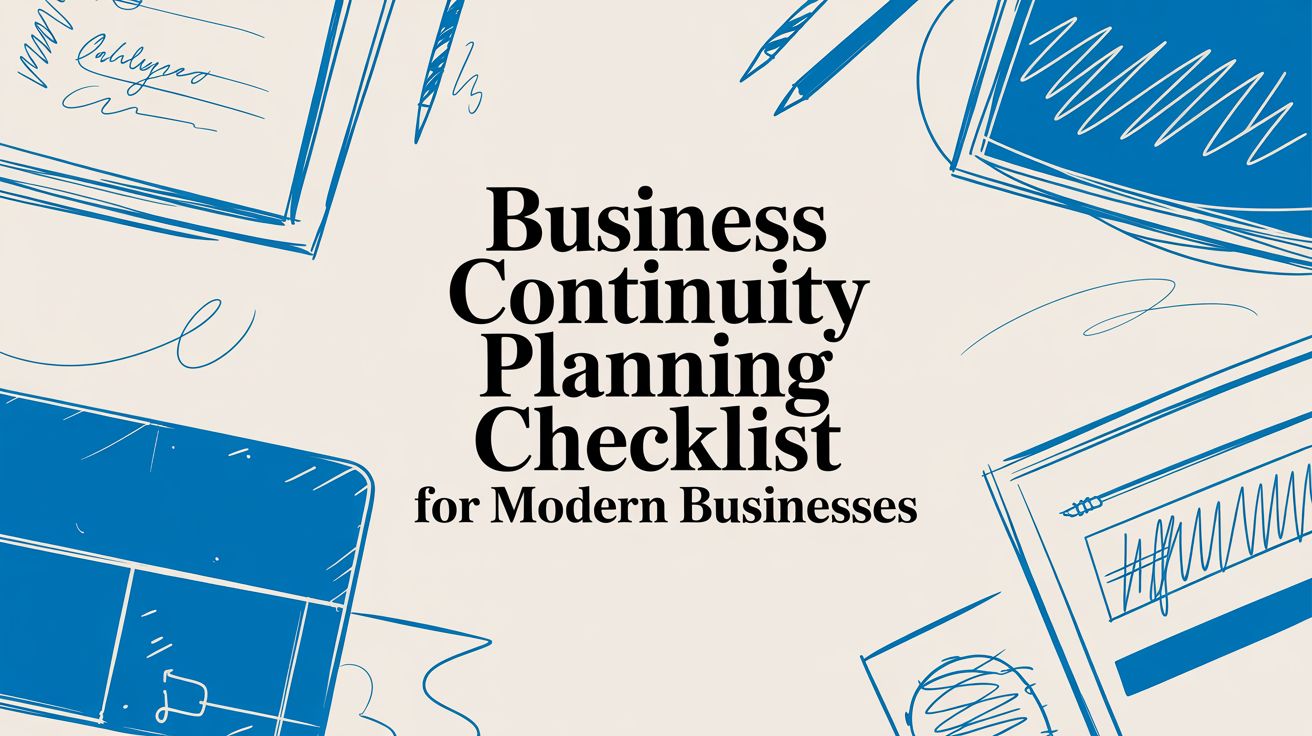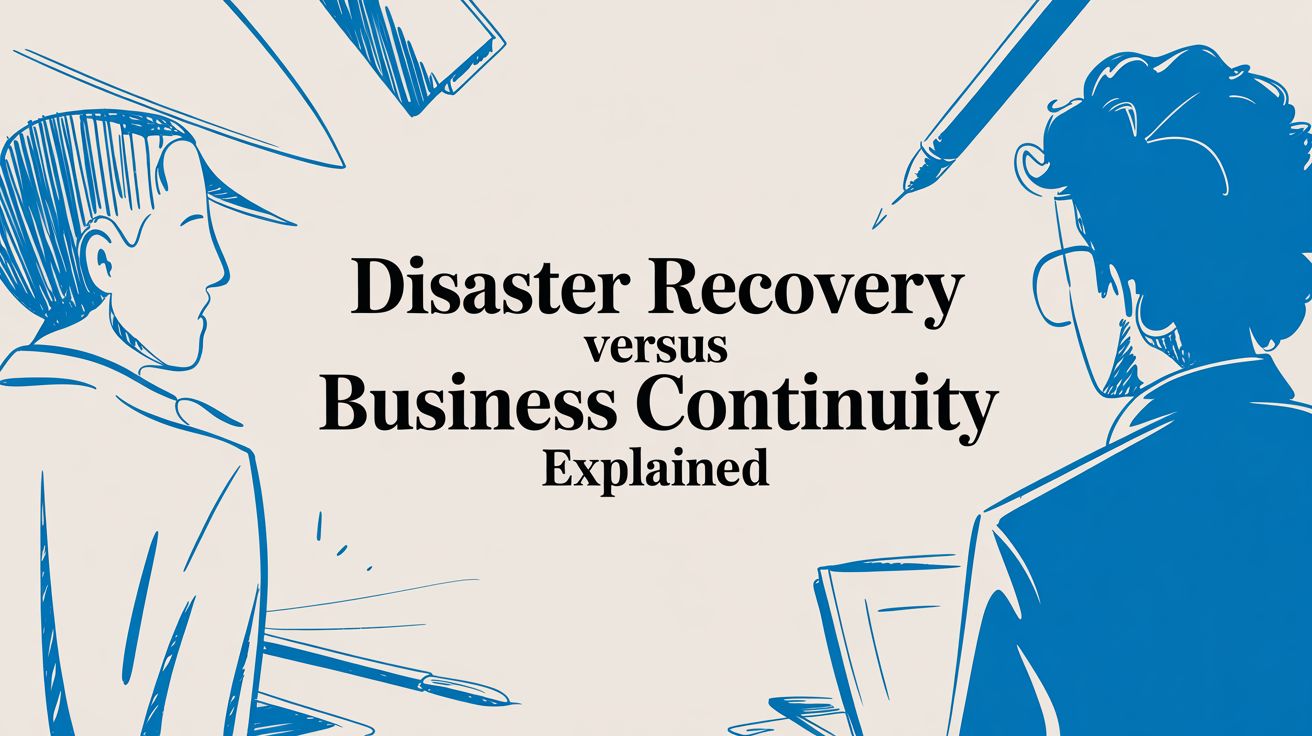10 Cloud Migration Best Practices for SMBs in 2025
Moving your business operations to the cloud is one of the most significant strategic decisions a small or mid-sized business can make. When done correctly with the help of a Managed IT Services partner, it unlocks unparalleled efficiency, scalability, and security. When executed poorly, it can lead to budget overruns, security vulnerabilities, and operational chaos. The difference between success and failure almost always comes down to a well-defined strategy grounded in proven cloud migration best practices.
For SMBs in competitive markets like Dallas, TX, and Memphis, TN, getting this transition right isn't just an IT project—it's a critical business imperative. A flawed migration can disrupt everything from daily operations in a medical clinic to client data management in a law firm. This guide cuts through the noise to provide actionable steps, grounded in real-world scenarios and proactive IT management principles. We will explore the proven roadmap that transforms a complex technical shift into a predictable, value-driven business evolution. Following these best practices ensures your technology becomes a powerful engine for growth, rather than a source of unforeseen risk and expense.
1. Comprehensive Assessment and Planning
A successful cloud migration is built on a foundation of meticulous planning. Rushing into the cloud without a clear strategy is a common pitfall that leads to unexpected costs, security gaps, and performance issues. This foundational step involves a thorough evaluation of your existing infrastructure, applications, and workloads to create a detailed migration roadmap. It’s one of the most critical cloud migration best practices because it aligns the technical execution with your specific business goals.
For small and mid-sized businesses, this means cataloging every piece of software, identifying how applications interact, and understanding data dependencies. For example, a Memphis-based logistics company must map how its warehouse management system (WMS) integrates with its shipping and accounting software before migrating. An experienced Managed IT partner can lead this discovery phase, ensuring no critical dependency is missed, which could otherwise halt operations.
Actionable Implementation Steps
- Automated Discovery: Use tools like Azure Migrate or AWS Application Discovery Service to automatically map your IT environment. This prevents manual oversights and uncovers "shadow IT" applications that may otherwise be missed.
- Stakeholder Interviews: Talk to department heads to understand which applications are most critical for their daily operations. The needs of your accounting team will differ greatly from your sales team.
- Establish Baselines: Document your current on-premise performance metrics and costs. This data is essential for a meaningful comparison after migration and helps in creating a realistic Total Cost of Ownership (TCO) model. For a detailed breakdown of costs, you can explore an in-depth cloud vs. on-premise comparison.
- Prioritize Workloads: Not everything needs to move at once. Identify a low-risk, high-impact application for an initial "quick win" to build momentum and demonstrate value to your team.
2. Adopt the 6 Rs Migration Strategy
Once you have a map of your environment, the next step is to decide how to move each application. The "6 Rs" framework, originally popularized by AWS, provides a strategic menu of options for this process. Instead of treating all workloads the same, this approach categorizes migrations into six distinct paths: Rehost, Replatform, Repurchase, Refactor, Retire, and Retain. This is one of the most effective cloud migration best practices as it prevents a one-size-fits-all mistake that can lead to high costs and poor performance.
For a professional services firm in Dallas, this means choosing the right path for each system. Their legacy accounting software might be "Rehosted" (lift-and-shift) for a quick, low-cost move, while they might "Repurchase" their old CRM by switching to a modern SaaS solution like Salesforce. This strategic sorting ensures that resources are allocated effectively, aligning the technical effort with the business value of each application.
Actionable Implementation Steps
- Map Applications to an "R": Analyze your application inventory from the planning phase and assign one of the six strategies to each workload. Use a simple spreadsheet to track the decision and rationale for each one.
- Start with Rehost for Quick Wins: For stable, legacy applications, a "Rehost" or lift-and-shift is often the fastest path to the cloud. This strategy minimizes initial changes and allows your team to start realizing the benefits of a scalable infrastructure, which you can learn more about in this guide to Infrastructure as a Service.
- Use Retire to Cut Technical Debt: Identify applications that are redundant, obsolete, or provide little business value. Decommissioning them (Retire) is a simple way to reduce complexity, cut licensing costs, and simplify your IT footprint.
- Reserve Refactor for Core Applications: Reserve the most intensive strategy, "Refactor," for business-critical applications where a cloud-native architecture would provide a significant competitive advantage through enhanced scalability or performance.
3. Implement a Phased Migration Approach
Attempting to move your entire IT infrastructure to the cloud in a single, massive event, often called a "big bang" migration, is incredibly risky. This all-or-nothing strategy leaves no room for error and can lead to catastrophic downtime if something goes wrong. A phased migration is one of the most crucial cloud migration best practices because it breaks the project into manageable, controlled waves, minimizing disruption and allowing your team to learn and adapt as you go.
This approach de-risks the entire process for SMBs. A Memphis-based accounting firm, for example, would not migrate its mission-critical tax software and client database simultaneously during peak season. Instead, a Managed IT Services provider would guide them to start with a less critical internal application, like their document management system, to validate their process before touching core financial systems. This incremental strategy ensures that essential business operations remain stable and secure throughout the transition.
Actionable Implementation Steps
- Create a Wave Prioritization Matrix: Group applications and workloads into logical migration waves. Prioritize them based on business impact, technical complexity, and interdependencies.
- Start with a Low-Risk Pilot: Select a non-critical but meaningful workload for your first wave. This initial move serves as a proof-of-concept, helping you refine your migration process and build confidence.
- Establish a Rollback Plan for Each Wave: Before migrating any workload, ensure you have a tested and documented plan to revert to the on-premise environment if unforeseen issues arise. This is your safety net.
- Schedule Around Business Cycles: Plan your migration waves to avoid peak operational periods. A property management company, for instance, should avoid scheduling a major migration during the first week of the month when rent processing is highest.
4. Establish Strong Cloud Governance and Security Framework
Migrating to the cloud isn't just a technical shift; it's an operational one that requires new rules for security, cost, and compliance. Establishing a strong governance framework is a non-negotiable step that ensures your cloud environment remains secure, compliant, and cost-effective. This is one of the most critical cloud migration best practices because it provides the guardrails needed to prevent security breaches and uncontrolled spending.

For a Memphis-based accounting firm handling sensitive financial data, this means defining who can access specific cloud resources and implementing strict data encryption policies from day one. An expert MSP implements layered security, including firewalls and endpoint protection, ensuring the firm avoids non-compliance with regulations and protects client data. Proactive governance turns the cloud from a potential liability into a secure business asset.
Actionable Implementation Steps
- Implement the Principle of Least Privilege: Grant users and applications only the minimum access permissions required to perform their functions. Use cloud-native Identity and Access Management (IAM) tools like Azure Active Directory or AWS IAM to enforce these policies strictly.
- Automate Compliance and Security Monitoring: Deploy Cloud Security Posture Management (CSPM) tools to continuously monitor for misconfigurations and compliance violations. This provides real-time alerts before a minor issue becomes a major breach.
- Establish a Cloud FinOps Policy: Create clear guidelines for resource tagging, budget alerts, and rightsizing instances. This prevents "bill shock" by making cost management a shared responsibility across technical and business teams, ensuring predictable operational expenses.
- Conduct Regular Security Audits: Schedule periodic third-party penetration tests and vulnerability assessments of your cloud environment. This practice validates your security controls and helps you stay ahead of emerging cyber threats targeting cloud infrastructures.
5. Build Skilled Cloud-Native Teams and Training Programs
Technology is only as effective as the people who manage it. A successful cloud transition depends heavily on having a team with the right skills to operate, secure, and optimize the new environment. One of the most forward-thinking cloud migration best practices is investing in your people through targeted training and team development. Without this, your organization risks underutilizing its cloud investment and facing security vulnerabilities due to a lack of expertise.
For SMBs, maintaining an in-house team with up-to-date cloud expertise is often impractical. This is where partnering with a Managed IT provider for a co-managed IT solution shines. The MSP brings certified Azure and AWS experts to manage the complex backend infrastructure, while your internal team can focus on using the new cloud tools to drive business value. This collaborative approach provides access to top-tier skills without the high cost of direct hires.
Actionable Implementation Steps
- Identify Cloud Champions: Find enthusiastic team members willing to lead the charge. Sponsoring them to achieve certifications like AWS Certified Solutions Architect or Microsoft Certified: Azure Administrator Associate builds in-house expertise and motivates others.
- Leverage Provider Training: Utilize free or low-cost learning platforms like AWS Skill Builder and Microsoft Learn. These resources offer structured paths to build foundational and advanced cloud skills across your entire team.
- Create a Knowledge Hub: Establish a simple, internal repository (like a SharePoint site or Teams channel) for cloud documentation, best practices, and lessons learned. This prevents knowledge from being siloed with just one or two individuals.
- Allocate Time for Learning: Formally dedicate a small portion of work hours, even just 5-10%, to continuous learning and professional development. This fosters a culture where staying current with rapidly evolving cloud technology is a priority.
6. Establish Robust Monitoring, Logging, and Observability
Migrating to the cloud without visibility is like flying blind. You lose the ability to track performance, identify security threats, and control costs effectively. Establishing comprehensive monitoring and observability before you go live is a non-negotiable step. This involves setting up tools to collect, analyze, and visualize data from your new cloud environment, ensuring you can see what’s happening at all times. This is one of the most vital cloud migration best practices because it transforms reactive problem-solving into proactive infrastructure management.
For a local Dallas-area accounting firm, this means setting up real-time alerts for its cloud-based tax software. If application response times slow down during the busy tax season, a Managed IT provider’s 24/7 remote support team is notified instantly, allowing them to address the issue before it impacts client deadlines. This proactive monitoring prevents poor performance from causing significant downtime and productivity loss.
Actionable Implementation Steps
- Implement Before Go-Live: Deploy your monitoring tools like Datadog or Azure Monitor in the testing environment first. This allows you to establish performance baselines on-premise to compare against your new cloud setup, providing a clear measure of success.
- Centralize Logging: Use a centralized logging platform such as Splunk or the ELK Stack (Elasticsearch, Logstash, Kibana) to aggregate logs from all your cloud services. This simplifies troubleshooting and security analysis by providing a single source of truth.
- Create Business-Critical Alerts: Don't just monitor CPU and memory. Set up alerts for key business metrics, such as transaction processing times or user sign-up failures. This connects system performance directly to business outcomes.
- Monitor Cloud Costs: Utilize cloud-native cost management tools like AWS Cost Explorer or Azure Cost Management. Set up budget alerts and anomaly detection to prevent unexpected spending spikes, a common post-migration surprise. For more on proactive system oversight, explore how status monitoring services in Dallas, TX can help maintain control.
7. Optimize Costs Throughout Migration Lifecycle
Cloud migration can unlock significant savings, but only if costs are actively managed from day one. A common mistake is the "lift and shift" approach, where on-premise resources are replicated in the cloud without optimization, leading to unexpectedly high bills. Proactive cost management is one of the most vital cloud migration best practices, as it ensures the financial benefits of the cloud are fully realized by preventing waste and maximizing resource efficiency.
For a professional services firm in Dallas, this means going beyond simply moving servers to Azure. An MSP would analyze their usage patterns to select the right-sized virtual machines and leverage cloud-native pricing models like Reserved Instances. This proactive management avoids paying for idle capacity, turning a variable IT expense into a predictable operational cost that directly benefits the bottom line.

Actionable Implementation Steps
- Implement a Tagging Strategy: Tag every cloud resource with identifiers for the department, project, and owner. This allows for precise cost allocation and accountability, making it easy to see which teams are driving expenses.
- Right-Size Your Instances: Use cloud provider tools like AWS Compute Optimizer or Azure Advisor to analyze performance data and identify over-provisioned resources. Downsizing these instances to match their actual workload is a quick way to cut costs.
- Leverage Reserved and Spot Instances: For predictable, long-term workloads like a core database server, purchase Reserved Instances (RIs) at a significant discount. Use Spot Instances for non-critical, interruptible tasks like batch processing to take advantage of deeply discounted spare capacity.
- Establish a FinOps Culture: Create a cross-functional team of finance, IT, and business leaders responsible for cloud cost governance. This group should regularly review spending, set budgets, and enforce cost-saving policies. Learning more about the costs of IT services can provide a strong foundation for this team.
- Automate Shutdowns: Implement automated scripts to shut down development and testing environments outside of business hours. This simple practice can reduce costs for non-production resources by over 60%.
8. Plan and Implement Data Migration Strategy
Your applications are important, but your data is the lifeblood of your business. A dedicated data migration strategy is essential for ensuring that this critical asset moves to the cloud securely, accurately, and with minimal disruption. This process involves more than just copying files; it requires a detailed plan that addresses data integrity, security, and potential downtime. This is one of the most technical cloud migration best practices, as failure here can lead to data loss, corruption, or compliance breaches.
For a professional services firm in Memphis, migrating client financial records requires a strategy that guarantees every byte is transferred without error and remains encrypted at all stages. This includes a robust business continuity plan. If a ransomware attack occurred mid-migration, a well-prepared MSP would leverage immutable backups to restore data and resume the migration securely, preventing a potential catastrophe.
Actionable Implementation Steps
- Start with Non-Critical Data: Begin by migrating less sensitive or non-operational data sets. This allows your team to test the process, tools, and validation checks in a low-risk environment before handling mission-critical information.
- Use Continuous Replication: For large databases or systems that cannot afford significant downtime, use tools that support continuous data replication. This method keeps the on-premise and cloud data in sync, allowing for a near-instantaneous cutover when ready.
- Implement Comprehensive Validation: After data is moved, it must be validated. Implement automated checks, such as row counts and checksums, to confirm that the target data in the cloud perfectly matches the source data on-premise.
- Keep a Rollback Plan: Do not decommission your source systems immediately after migration. Keep them active and ready for a potential rollback for at least 48-72 hours. This provides a crucial safety net if unforeseen issues arise post-migration. For more details on safeguarding your data, you can explore our guide on data backups and disaster recovery in Dallas.
9. Implement Application-Level Optimization and Modernization
A simple "lift-and-shift" migration moves your applications to the cloud but doesn't unlock its full potential. True transformation comes from optimizing and modernizing applications to leverage cloud-native capabilities. This practice involves refactoring legacy code or re-architecting systems to improve performance, scalability, and operational efficiency, making it one of the most impactful cloud migration best practices for long-term value.
For a growing professional services firm in Memphis, this could mean containerizing their custom client relationship management (CRM) software. Instead of running it on a single, large virtual server, containerization allows for faster updates, better resource utilization, and improved reliability. An IT services partner can manage this complex modernization, ensuring the firm's team can always access critical client data without being bogged down by technical overhead. This transforms the migration from a simple location change into a strategic business enhancement.

Actionable Implementation Steps
- Prioritize Modernization: Focus first on high-impact, customer-facing applications where improvements in performance and scalability will deliver immediate business value.
- Use Containerization as a Stepping Stone: Adopt technologies like Docker and Kubernetes to package applications. This approach provides a clear path toward a more complex microservices architecture without requiring a complete rewrite from day one.
- Leverage Managed Cloud Services: Offload operational burdens by using managed services like Amazon RDS for databases or AWS Lambda for serverless functions. This accelerates development and reduces your team's management overhead.
- Automate Deployments Early: Building a robust CI/CD pipeline is essential before starting a major modernization effort. When optimizing applications for Azure, establishing strong automation is key. Learn how to set up a CI/CD pipeline on Azure Cloud to streamline your workflow.
10. Establish Clear Communication Plan and Change Management
A cloud migration is as much a people project as it is a technology project. Moving to new systems inevitably changes workflows, and without a clear communication plan, you risk employee resistance, confusion, and poor adoption rates. This is why establishing a robust change management strategy is one of the most essential cloud migration best practices. It ensures everyone from the C-suite to the front-line staff understands the "why" behind the move and is prepared for the "how."
For a professional services firm in Memphis, migrating its document management system to Microsoft 365 isn't just a server swap. It's a fundamental shift in how paralegals, attorneys, and administrative staff access, share, and secure client files. A proactive communication plan, often supported by security awareness training from an MSP, transforms potential friction into enthusiastic adoption by highlighting benefits like secure remote access and improved collaboration, making the transition a clear business win.
Actionable Implementation Steps
- Secure Executive Sponsorship: Assign a C-suite executive as the project sponsor. Their visible support reinforces the migration’s importance and helps overcome organizational hurdles.
- Develop a Communication Cadence: Create a schedule for updates, such as weekly progress emails for key stakeholders and monthly town-hall meetings for the entire company. This prevents misinformation and keeps everyone aligned.
- Address Concerns Transparently: Actively solicit feedback and create a safe channel for employees to voice their concerns. To guide your organization through significant shifts, implementing effective change management process steps will help you manage resistance and build trust.
- Empower Cloud Champions: Identify enthusiastic employees within different departments to act as advocates. These champions can provide peer-to-peer support, share success stories, and help tailor training to their team’s specific needs.
10-Point Cloud Migration Best Practices Comparison
Partner with Experts for a Flawless Migration
Embarking on a cloud migration is a transformative step for any small or medium-sized business. It's far more than a simple IT project; it's a strategic business evolution that promises enhanced scalability, improved security, and greater operational agility. Throughout this guide, we've detailed the essential cloud migration best practices, from conducting a comprehensive assessment and adopting the "6 Rs" strategy to optimizing costs and establishing a robust governance framework. These aren't just checkboxes on a list; they are the foundational pillars of a successful, secure, and cost-effective transition.
Mastering these practices ensures your migration avoids common pitfalls like budget overruns, security vulnerabilities, or unexpected downtime that can cripple a small business. A phased approach mitigates risk, while a focus on application-level optimization guarantees you harness the full power of cloud-native capabilities. Similarly, proactive monitoring and a clear communication plan are crucial for maintaining performance and ensuring user adoption post-migration. Each practice, from data strategy to security implementation, interconnects to form a comprehensive roadmap for success.
The Value of an Expert Partner in Your Cloud Journey
For many small businesses, particularly in specialized fields like healthcare or professional services in Dallas or Memphis, executing these steps flawlessly while managing daily operations is a monumental challenge. The technical complexity, security risks, and required resource allocation can quickly become overwhelming. This is where the true value of a dedicated IT partner becomes clear.
A Managed IT Services Provider (MSP) doesn't just offer technical support; they provide the strategic oversight and hands-on expertise needed to navigate every stage of your cloud journey. They act as an extension of your team, bringing years of experience to the table. Consider a medical clinic in Memphis needing to migrate its patient records to a HIPAA-compliant cloud environment. An expert partner ensures that every step, from data encryption to access controls, meets stringent regulatory requirements, a task that would be daunting for an internal team without specialized compliance knowledge.
By leveraging a team of cloud specialists, you can de-risk your migration and accelerate your return on investment. Instead of learning through trial and error, you benefit from a proven methodology that incorporates all the cloud migration best practices discussed. This allows you to focus on your core business goals, confident that your IT infrastructure is not only secure and reliable but also positioned to drive future growth. The result is a seamless transition that transforms your cloud ambitions into a powerful business reality.
Ready to turn your cloud migration plans into a secure and successful reality? The team at PWR Technologies LLC specializes in guiding businesses in Dallas and Memphis through every step of the process, from initial strategy to post-migration optimization. Contact PWR Technologies LLC today to ensure your cloud journey is built on a foundation of expertise and best practices.




